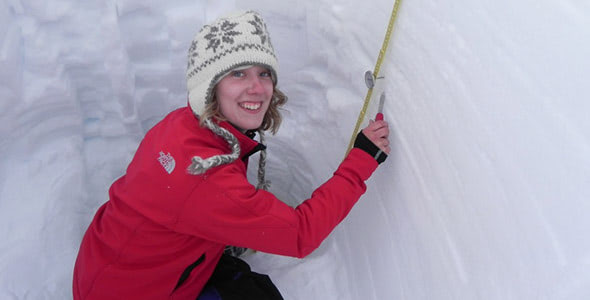- Undergraduate
Bachelor's Degrees
Bachelor of ArtsBachelor of EngineeringDual-Degree ProgramUndergraduate AdmissionsUndergraduate Experience
- Graduate
Graduate Experience
- Research
- Entrepreneurship
- Community
- About
-
Search
All Thayer News
Study: Climate Change, Fires Melted Greenland Ice Surface
May 20, 2014 | Dartmouth Now
A Dartmouth-led study finds that rising temperatures and ash from Northern Hemisphere forest fires combined to cause large-scale surface melting of the Greenland ice sheet in 1889 and 2012. This contradicts conventional thinking that the melting was driven by warming alone.
The findings suggest that continued climate change will result in nearly annual widespread melting of the ice sheet’s surface by the year 2100. Melting in the dry snow region does not contribute to sea level rise. Instead, the meltwater percolates into the snowpack and refreezes, leaving a less reflective surface. This reformed surface becomes even more susceptible to future melting due to the surface’s reduced reflectance. The ability to reflect sunlight is known as “albedo.”
The study, conducted by Thayer School of Engineering and the Desert Research Institute, is reported in the Proceedings of the National Academy of Sciences. The research was supported by the National Science Foundation and NASA.
“The widespread melting of the Greenland ice sheet required the combination of both of these effects—a lowered snow albedo from ash and unusually warm temperatures—to push the ice sheet over the threshold,” says Kaitlin Keegan, the study’s lead author and a Dartmouth [engineering] doctoral student. “With both the frequency of forest fires and warmer temperatures predicted to increase with climate change, widespread melt events are likely to happen much more frequently in the future.”
The massive Greenland ice sheet experiences annual melting at low elevations near the coastline, but surface melt is rare in the dry snow region in its center. In July 2012, however, more than 97 percent of the ice sheet experienced surface melt, the first widespread melt during the era of satellite observation. Keegan, who added critical information to NASA’s announcement of the 2012 melt, studies the newly deposited layers of snow that top the 2-mile-thick ice sheet. ...

Kaitlin Keegan, the study’s lead author and a Dartmouth [engineering] doctoral student, investigates the newly deposited snow layering, known as firn, in the Greenland ice sheet. (Photo by Laura Levy)
... “Our Earth is a system of systems,” says Thayer Professor Mary Albert, co-author of the study and the director of the U.S. Ice Drilling Program Office. “Improved understanding of the complexity of the linkages and feedbacks, as in this paper, is one challenge facing the next generation of engineers and scientists—people like Kaitlin.”
Link to source:
http://now.dartmouth.edu/2014/05/study-climate-change-fires-melted-greenland-ice-surface/
For contacts and other media information visit our Media Resources page.
